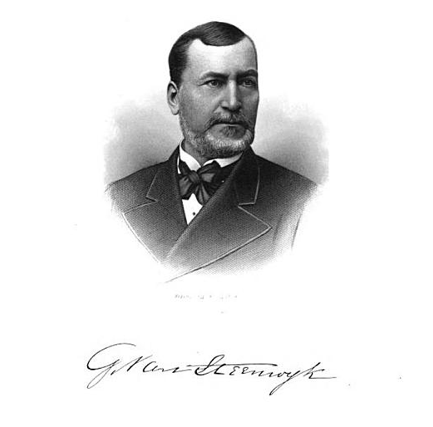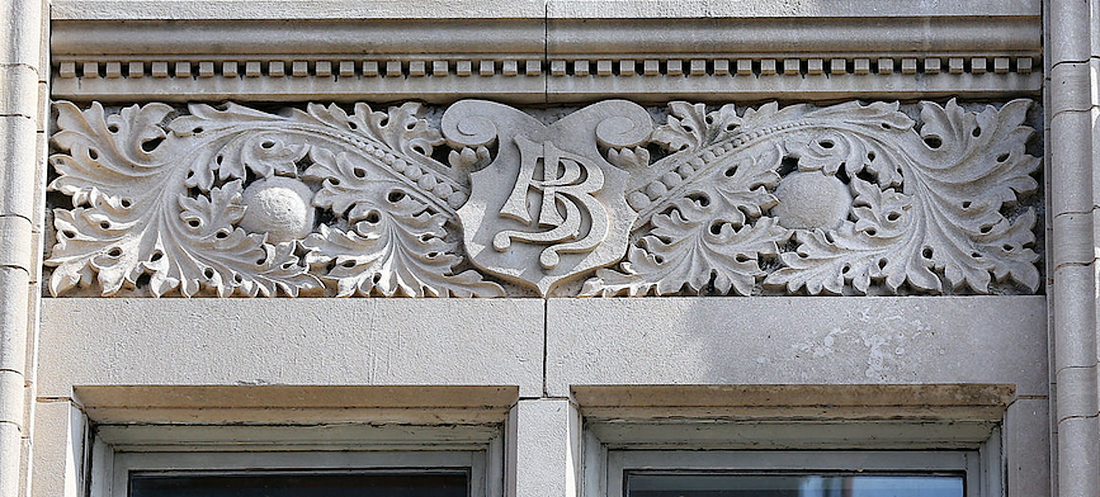History
The Batavian Bank was founded by Gysbert Van Steenwyk, a Dutch native who settled in La Crosse after immigrating to Milwaukee. Van Steenwyk was an important Democrat, with Milwaukee capitalist and European banking connections. He became mayor and was a member of the La Crosse Board of Trade. The Batavian Bank financed La Crosse's transportation from a lumber town to a center of diversified manufacturing. Van Steenwyk contributed greatly to the development of La Crosse. He brought capitol and connections. The Batavian Bank helped finance La Crosse into the Industrial Age.
From 1873 to 1874, Van Steenwyk served as Mayor of La Crosse. He was elected senator from the Wisconsin Senate, District 31 (La Crosse County) for 1879-80. He was assigned to the committees on insurance, banks and banking; and on enrolled bills, chairing the latter.
Papers of an early La Crosse, Wisconsin, banker and mayor, and of his family. Gysbert van Steenwyk, Sr. (1814-1902), who founded the Batavian Bank in La Crosse, Wisconsin, and was active in state and local politics. Van Steenwyk, a Dutch immigrant, served a term in 1873 as mayor of La Crosse, Wisconsin, and also served in the Wisconsin state legislature as assemblyman in 1859 and senator 1879-1880. True to his homeland, he named his bank after the Republic of Batavia, which was the name of the Netherlands during the Napoleonic Era.
The four-story limestone Richardsonian Romanesque Revival Batavian Bank is one of the most architecturally and historically significant buildings in the downtown. This interpretation of the Richardsonian Romanesque style by Chicago-based architect Solon Spencer Berman exhibits the heavy massing and repeated round arch motif which are the hallmarks of this style that was very popular in commercial, public and church buildings in 1880s and 1890s. The triple-arch form is established on the first floor and repeated on the third floor and fourth floors. The fourth floor arched colonnade is especially evocative of the Romanesque style that has historic roots in Western Europe in the millennium after the fall of the Roman Empire. Historic photos show the original ornate entrance on the east end and the battered stone foundation walls. The roof overhang is ornamented with a row of modillions. Of particular interest is the Sullivanesque carved floral decoration located on the horizontal spandrels between the second and third floor and at the top of the massive piers on each corner. Also note the “BB” on the shield in the middle of the spandrels representing the Batavian Bank.
From 1873 to 1874, Van Steenwyk served as Mayor of La Crosse. He was elected senator from the Wisconsin Senate, District 31 (La Crosse County) for 1879-80. He was assigned to the committees on insurance, banks and banking; and on enrolled bills, chairing the latter.
Papers of an early La Crosse, Wisconsin, banker and mayor, and of his family. Gysbert van Steenwyk, Sr. (1814-1902), who founded the Batavian Bank in La Crosse, Wisconsin, and was active in state and local politics. Van Steenwyk, a Dutch immigrant, served a term in 1873 as mayor of La Crosse, Wisconsin, and also served in the Wisconsin state legislature as assemblyman in 1859 and senator 1879-1880. True to his homeland, he named his bank after the Republic of Batavia, which was the name of the Netherlands during the Napoleonic Era.
The four-story limestone Richardsonian Romanesque Revival Batavian Bank is one of the most architecturally and historically significant buildings in the downtown. This interpretation of the Richardsonian Romanesque style by Chicago-based architect Solon Spencer Berman exhibits the heavy massing and repeated round arch motif which are the hallmarks of this style that was very popular in commercial, public and church buildings in 1880s and 1890s. The triple-arch form is established on the first floor and repeated on the third floor and fourth floors. The fourth floor arched colonnade is especially evocative of the Romanesque style that has historic roots in Western Europe in the millennium after the fall of the Roman Empire. Historic photos show the original ornate entrance on the east end and the battered stone foundation walls. The roof overhang is ornamented with a row of modillions. Of particular interest is the Sullivanesque carved floral decoration located on the horizontal spandrels between the second and third floor and at the top of the massive piers on each corner. Also note the “BB” on the shield in the middle of the spandrels representing the Batavian Bank.
A major remodeling in 1927 moved the entry from the center of the building to the east side and the first floor was further altered by the replacement of the ashlar limestone surface with polished red granite in 1957. The bay windows on the south and west facade were also removed or reduced from their original size. In spite of these alterations, the Batavian Bank remains one of the pivotal buildings in the National Register Commercial District and an important surviving example of the Richardsonian Romanesque Revival style in La Crosse.
Our Logo
Our logo design was created by accessing the design brilliance of Berman, who created the intertwined B's in the original facade work of the building




